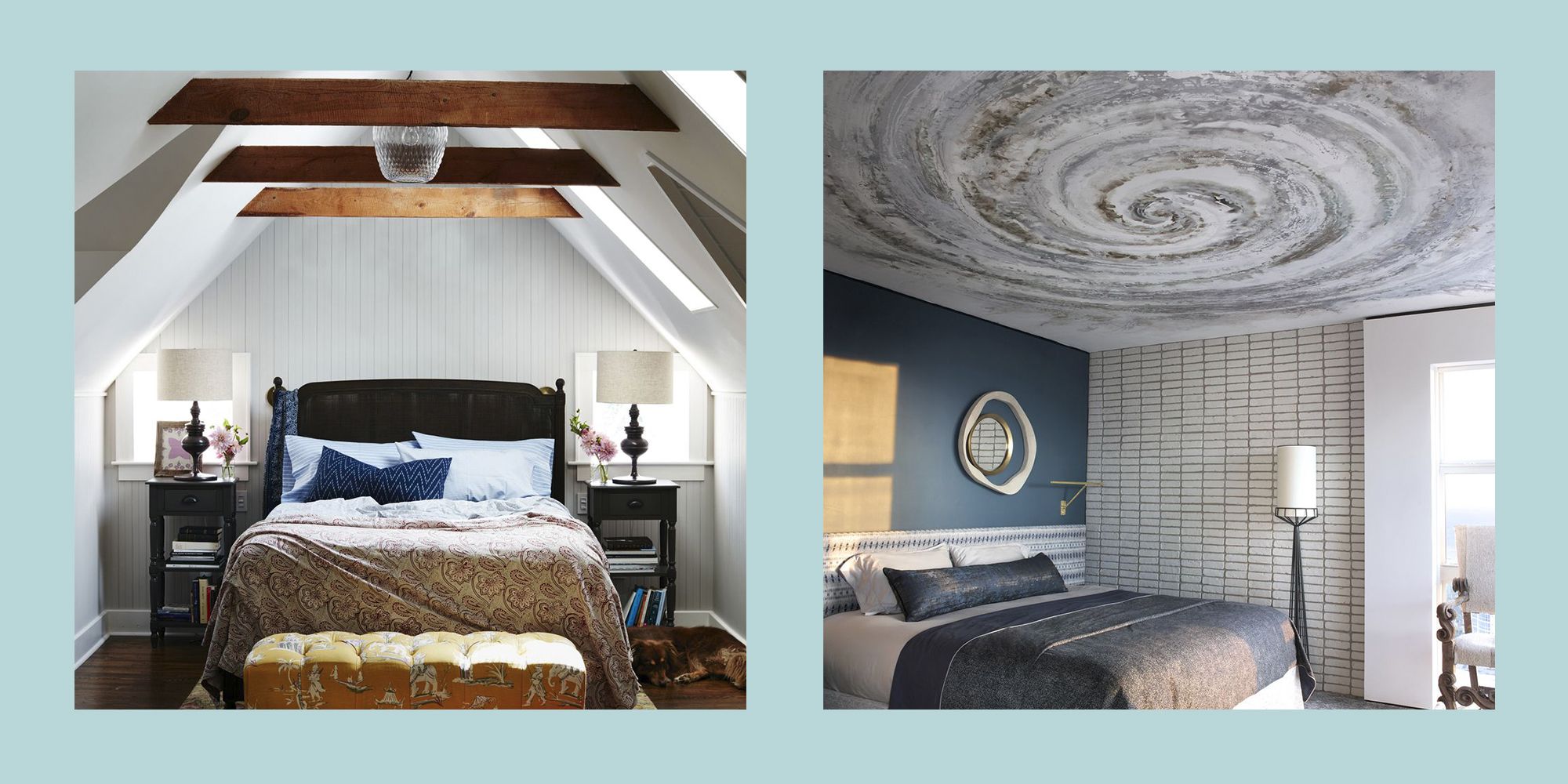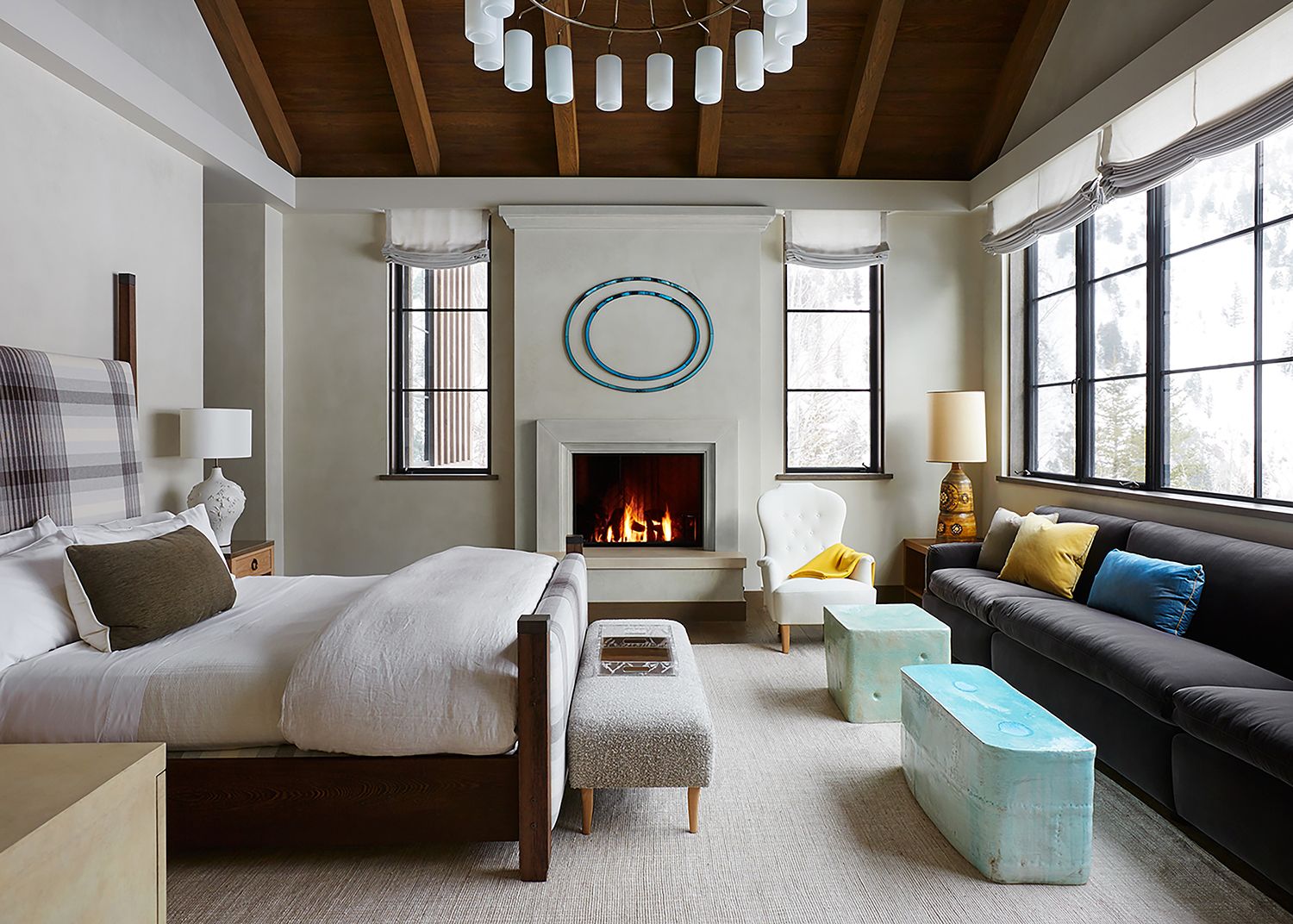Trending Ceiling Designs for Bedrooms (2017)

In 2017, bedroom ceiling designs were influenced by a desire for both style and functionality. Homeowners sought designs that not only enhanced the aesthetic appeal of their bedrooms but also provided practical benefits like improved lighting and a sense of spaciousness.
Coffered Ceilings
Coffered ceilings, characterized by their recessed panels, became increasingly popular in 2017. They added a touch of elegance and sophistication to bedrooms while creating a sense of depth and dimension. The recessed panels provided a unique architectural detail that enhanced the overall visual appeal of the room.
“Coffered ceilings are a great way to add visual interest and architectural detail to a bedroom. They can also help to make a room feel larger and more spacious.”
The popularity of coffered ceilings was further fueled by their versatility. They could be incorporated into various bedroom styles, from traditional to modern, and could be customized with different materials, colors, and finishes to suit individual preferences.
Vaulted Ceilings
Vaulted ceilings, with their sloping or arched design, were another popular choice for bedrooms in 2017. They offered a sense of grandeur and openness, making the room feel larger and more airy. The sloping design also created a unique focal point in the room, drawing the eye upwards and adding a touch of drama.
“Vaulted ceilings are perfect for bedrooms that need a sense of spaciousness and grandeur. They can also be used to create a cozy and intimate atmosphere.”
Vaulted ceilings were often combined with skylights or large windows to maximize natural light, creating a bright and inviting atmosphere. They were particularly well-suited for bedrooms with high ceilings, as they provided a more balanced and aesthetically pleasing design.
Tray Ceilings
Tray ceilings, featuring a recessed central panel surrounded by a raised perimeter, were a popular choice for those seeking a more contemporary look. The recessed panel offered a unique opportunity to incorporate decorative elements like lighting fixtures or artwork.
“Tray ceilings are a great way to add a touch of sophistication and elegance to a bedroom. They can also be used to create a focal point in the room.”
The raised perimeter of a tray ceiling created a sense of depth and dimension, while the recessed panel provided a unique space for highlighting specific features. Tray ceilings were often combined with crown molding to enhance their visual appeal and create a more finished look.
Factors Influencing Bedroom Ceiling Design Choices: Best Ceiling Design For Bedroom 2017

In 2017, homeowners were increasingly drawn to innovative and personalized bedroom ceiling designs. The decision-making process was influenced by a confluence of factors, ranging from individual preferences to budgetary constraints and architectural considerations.
Personal Preferences
Personal preferences played a significant role in shaping bedroom ceiling designs. Homeowners often sought to create a space that reflected their unique tastes and personalities. For instance, a minimalist might opt for a sleek, contemporary design with clean lines and a neutral color palette. In contrast, a homeowner with a penchant for the dramatic might choose a bold, statement-making ceiling with intricate molding or a striking accent color.
Budget Constraints
Budgetary considerations were another crucial factor influencing ceiling design choices. While some homeowners had the luxury of indulging in elaborate designs with high-end materials, others needed to find cost-effective solutions. This led to the popularity of budget-friendly options such as painted ceilings, textured finishes, or simple, geometric patterns.
Architectural Styles
The architectural style of the home also played a role in determining the ceiling design. For example, a traditional home might feature a coffered ceiling with intricate detailing, while a modern home might opt for a flat, minimalist ceiling with recessed lighting. The design choices were often dictated by the overall aesthetic of the home, ensuring a cohesive and harmonious look.
Technological Advancements, Best ceiling design for bedroom 2017
Technological advancements in lighting and materials significantly impacted bedroom ceiling designs. The advent of LED lighting, for example, offered homeowners a wider range of options for illuminating their spaces. LED lights are energy-efficient, long-lasting, and come in a variety of colors and styles, allowing for customized lighting effects. Additionally, advancements in materials, such as acoustic panels and sound-absorbing tiles, provided homeowners with more options for creating a comfortable and acoustically pleasing environment.
Creating a Stylish and Functional Bedroom Ceiling

In 2017, bedroom ceiling design trends embraced a fusion of aesthetics and functionality, creating spaces that were both visually appealing and conducive to relaxation. This section will explore how to achieve a stylish and functional bedroom ceiling by incorporating popular trends from that year. We will delve into the materials, tools, and techniques required to bring your vision to life, and highlight the importance of integrating functional elements like lighting and ventilation.
Choosing the Right Materials for a Stylish Bedroom Ceiling
The choice of materials for your bedroom ceiling plays a crucial role in determining its aesthetic appeal and functionality. Here are some of the most popular materials used in 2017:
- Drywall: A versatile and cost-effective option, drywall is a popular choice for bedroom ceilings. It provides a smooth, even surface that can be painted or textured to create various looks.
- Wood: Wood panels, particularly reclaimed or salvaged wood, were trending in 2017. They add warmth, character, and a touch of rustic charm to bedroom ceilings.
- Tin Tiles: Tin ceiling tiles are a popular choice for adding a vintage or industrial touch to a bedroom. They are available in various colors and patterns, allowing for creative customization.
- Acoustic Panels: If noise reduction is a concern, acoustic panels are a practical choice. They are available in various materials and colors and can be incorporated into the ceiling design to enhance sound absorption.
Techniques for Creating a Stylish Bedroom Ceiling
Once you’ve chosen your materials, you need to consider the techniques you’ll use to achieve your desired design. Here are some popular methods:
- Painting: A classic and versatile technique, painting can transform your bedroom ceiling into a statement piece. Consider using bold colors, patterns, or even murals to create a unique look.
- Texturing: Texturing can add depth and dimension to your bedroom ceiling. Popular techniques include stippling, sponging, and using stencils to create patterns.
- Coffered Ceilings: Coffered ceilings involve creating recessed panels in the ceiling, often using wood or drywall. They add architectural interest and elegance to the space.
- Vaulted Ceilings: Vaulted ceilings create a sense of spaciousness and grandeur. They are often used in bedrooms with high ceilings and can be achieved using drywall or wood.
Incorporating Functional Elements into Your Bedroom Ceiling Design
A stylish bedroom ceiling should not only be visually appealing but also functional. Consider integrating these elements:
- Lighting: Adequate lighting is essential for a functional bedroom. Recessed lighting, pendant lights, and chandeliers can be incorporated into the ceiling design to create a desired ambiance and provide sufficient illumination.
- Ventilation: Good ventilation is crucial for a comfortable and healthy sleeping environment. Consider installing ceiling fans or incorporating ventilation systems into the ceiling design to ensure proper air circulation.
Lighting Techniques for a Functional Bedroom Ceiling
Lighting plays a vital role in creating the right atmosphere in a bedroom. Here are some lighting techniques that were popular in 2017:
- Layered Lighting: Combining different types of lighting, such as ambient, task, and accent lighting, can create a multi-dimensional and functional lighting scheme.
- Dimmable Lighting: Dimmable lights allow you to adjust the brightness according to your needs, creating a relaxing ambiance for bedtime or a brighter setting for reading.
- Ambient Lighting: Ambient lighting provides general illumination for the room. Recessed lighting, ceiling fans with integrated lights, or chandeliers are popular choices for ambient lighting.
- Task Lighting: Task lighting is essential for activities like reading or applying makeup. Consider installing bedside lamps or sconces to provide focused illumination.
- Accent Lighting: Accent lighting highlights specific features in the room, such as artwork or architectural details. Track lighting or spotlights can be used to create dramatic effects.
